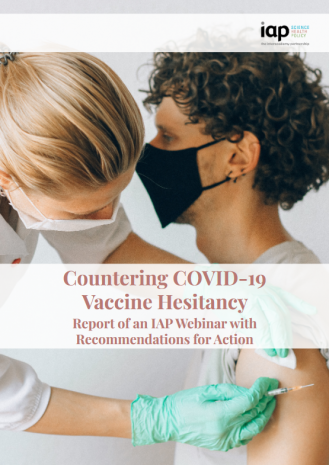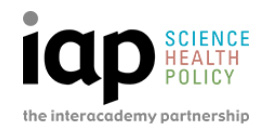Executive summary
COVID-19 continues to cause problems around the world. Countries that seemed to have brought the virus under control with various lockdowns are suffering new waves of infection.
In addition, where the virus is spreading most rapidly, new variants continue to emerge, potentially threatening gains made via vaccination and other control measures.
It is increasingly clear, however, that although drugs that ameliorate the disease may help, vaccination will be the most effective way of bringing the COVID-19 pandemic under control.
A number of COVID-19 vaccines have passed through the necessary regulatory and authorisation processes and are now increasingly available in many countries. Such vaccines have been produced using various tried-and-tested methods, but also using new technologies such as messenger RNA (mRNA) linked with lipid nanoparticles.
It is estimated that at least 70% of people, distributed equitably around the world, will need to be fully vaccinated in order to bring the pandemic under control. However, as well as logistical and equity issues regarding access to the vaccines, the socio-political and psychological issue of ‘vaccine hesitancy’ also needs to be addressed to reach this target.
According to the World Health Organization (WHO), vaccine hesitancy refers to a “delay in acceptance or refusal of vaccines despite availability of vaccine services. Vaccine hesitancy is complex and context specific, varying across time, place and vaccines. It is influenced by factors such as complacency, convenience and confidence.”
In any population, there are people who will accept a given vaccine, and people who will strongly reject it. Then there are those in the middle who are undecided – hesitant – and may need more information or gentle persuasion in order to accept the vaccine. As these people may comprise a significant proportion of any given population, it is critical that their hesitancy is addressed and as many as possible can be persuaded to accept a COVID-19 vaccine. Achieving this goal will not only require knowledge of the relevant scientific facts, but also an understanding of the reasons behind people’s reluctance to embrace vaccination, which likely also requires an understanding of their psychologies, their in-groups (i.e. the social group/s to which a person psychologically identifies as being a member), and engagement with the media, including especially social media.
Scientists and doctors are typically members of professions in which the public has a high level of trust. And among providers of science advice, the independence and credibility of national academies means that they can play a special role as knowledge brokers, bringing together and synthesising available science, translating science into action, and in science communication. It is hoped, therefore, that the information and advice presented here by the InterAcademy Partnership – the global network of academies of science, medicine and engineering – will allow leaders and communicators of academies, as well as other credible scientific organisations and medical professionals in every country, to make strong and persuasive arguments for the acceptance of COVID-19 vaccines in a concerted effort to bring the pandemic under control.
This report is based on overviews by five experts in their fields that were presented during an IAP Global Webinar ‘Countering Vaccine Hesitancy' (23 March 2021), the aim of which was to introduce the basic concepts of vaccine development and regulation/authorisation; to understand better the reasons why people think and make decisions the way they do, including in response to leaders and the media; to learn how to tackle false and misleading claims by those opposed to vaccines, including some scientists and clinicians; and how to promote a culture of trust in the COVID-19 vaccines.
Following an Introduction, Section 2 focuses on ‘Vaccines: Development and Regulation’ and reviews how vaccines work, the main ways that vaccines are developed, and how vaccines proceed from the laboratory through the clinical trial process to registration and approval for roll-out. It also attempts to allay fears regarding some of the main causes of vaccine hesitancy.
Section 3 focuses on ‘Vaccine hesitancy: Factors that affect people’s decision to choose vaccination’ and reviews the potential causes of vaccine hesitancy, including factors that are inherently linked with individual’s dispositions (e.g., values, beliefs and attitudes), as well as factors that are dependent on the situation (e.g., the pandemic and the spread of information and/or misinformation). Special emphasis is placed on the societal factors that affect how people intercept, acquire and disseminate mis/information, including the political landscape (with increased polarisation), the knowledge landscape (with distrust in scientists) and the media landscape (with an increased risk of spread of different kinds of false information). This section concludes by reviewing some ways in which academies and other scientific organisations can begin to address the causes behind people’s vaccine concerns.
Arising from these presentations, the subsequent discussions, as well as other cited resources, this report also includes a set of recommendations (Section 4). These recommendations are targeted at various groups, including academies and other scientific bodies, governments and healthcare providers, pharma companies, journalists and the media, and individuals, including individual scientists.
The recommendations include:
- Present the facts about vaccines in general and COVID-19 vaccines in particular: How they work, how they have been developed, what they contain.
- Engage in a public dialogue, use empathetic listening and responding to people’s concerns. Appeal to empathy and altruism.
- Establish participatory engagement and open debates, including with minorities and other marginalised communities, prior to, or at least very early on in the vaccine roll- out.
- Do not avoid questions of ‘uncertainty’ (in the face of an evolving pandemic and ongoing research situations), including over the issue of side effects.
- Also avoid politicising the debate. Listen to concerns and respond with facts, or at least the latest understanding.
- Be transparent, sharing data on trial protocols and results in easily accessible formats.
- Provide up-to-date information on any adverse reactions, including break-down of data by age group, gender, etc. There should be clear communication protocols for communicating with the public about adverse events.
- To assuage fears that vaccines are being pushed through the approval process too quickly, often with the perception that there is political pressure to do so, a number of vaccine manufacturers have pledged not to submit vaccines for approval in the US until proven safe in large clinical trials. Such pledges should be rolled out more broadly to give further reassurances for people everywhere.
- Establish surveillance systems, ideally run by independent bodies, to keep track of adverse medical events which may be caused, or perceived to be caused, by vaccines.
- Establish clear communication protocols for communicating with the public about adverse events. Establish qualitative research programmes to monitor vaccine confidence and hesitancy, and provide contextual understanding of the root causes, features, and trajectories of hesitancy. Data analysed and presented by such programmes can help inform strategy and policy as well as to adapt messaging to changing situations.
- Make adjustments to vaccine roll-out plans based on peoples’ feedback and concerns.
- Continually monitor roll-out and potential emerging and evolving causes of hesitancy (including via negative social media commentary) and adapt roll-out methodologies and messaging appropriately, also taking into account concerns of minorities or marginalised communities that may differ from those of the mainstream.
- Manage expectations about vaccine effectiveness and uncertainty about time-frame for ‘returning to normal’, which may depend on what proportion of the population is vaccinated; explain reasons for who is prioritised (medical and other key personnel, which age groups, etc).
- Use trusted biomedical professionals to administer the vaccines, ideally by using existing healthcare infrastructures that are already accepted. Such infrastructures, including on-line sign-up services, should be well maintained and efficiently run. This will help inspire confidence and avoid making the experience of booking and receiving the vaccine a negative one.
- However, also consider using locations such as shopping centres, schools, religious sites, etc, as vaccine centres that may be accessible to more sections of society.
- Address vaccine hesitancy among healthcare workers. Ensure that they themselves have the confidence to communicate effectively about COVID-19 vaccines and to convince those who are hesitant.
- Incentives and disincentives may be used to increase vaccine uptake, but coercive policies should be strictly limited and based on robust scientific evidence.
- Care should be taken if considering deploying the military to vaccinate people. In some countries this may contribute to mistrust and hesitancy.
- Ensure that messaging is jargon-free and accessible to all. Messages should be targeted to specific audiences, taking their concerns into account – hence the need for early dialogue.
- Consider using all the different languages spoken within a country.
- Context-specific messaging may be able to build on personal stories.
- Communication should utilise a range of platforms, both off and online, including social media.
- Visual imagery (including theatre) and memes can be effective and engaging ways to convey key information. Such accessible material can help people make sense of things in this uncertain period.
- Take time to understand the social media landscape and its complexities. For example, misinformation can be characterised by: (1) distrust of science and selective use of expert authority, (2) distrust in pharmaceutical companies and government, (3) the provision of simplistic explanations, (4) the use of emotion and anecdotes to impact rational decision-making; and, (5) the development of information bubbles and echo chambers. • Appropriate and targeted messaging might be needed to gain traction in each of these scenarios.
- Act responsibly and think about the source and accuracy of any information prior to posting or sharing, either verbally or online (even if it is ‘just for a laugh’).
- Emphasise support for vaccination. This can be done by providing updated information on the number of vaccinations carried out, providing ‘I got vaccinated’ badges or stickers, promoting social media memes, etc. Focus on the positive and not on those who are strongly resisting getting vaccinated.
- Avoid repeating false claims and giving too much focus on tackling misinformation. It is better to be pro-active and to disseminate correct information. However, appropriate debunking and using techniques such as the ‘truth sandwich’ can be effective. Accept (and explain) that there are gaps in our current knowledge.
- Trusted celebrities and (e.g. musicians, sports stars, even online influencers) and community champions (e.g. faith leaders) can be leveraged to endorse vaccines. Identify such individuals and work with them to develop their understanding of the issues and suitable messaging.
It is hoped that these recommendations and the other factual information presented in this report can be used by academies and other organisations in an effort to counter vaccine hesitancy and promote vaccine acceptance in their countries as part of other major efforts aimed at finally bringing the COVID-19 pandemic under control.
Download the full report 'Countering COVID-19 Vaccine Hesitancy' here.
Read the press release From memes to trial protocols: the world academies’ new toolkit to fight COVID-19 vaccine hesitancy.

